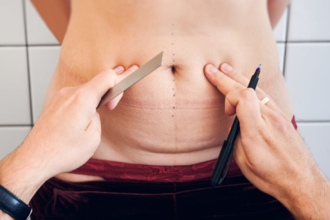Making the decision to get breast implants can be both an exciting time in a person’s life and a time of many questions about how they want the procedure to be done.
People get breast implants for a lot of reasons, others are for a desire for larger breasts, to correct asymmetry, or for breast reconstruction surgery. No matter The case, it is still best to consult with an expert before getting one, visit https://www.newimprovedbody.com/ for more information.
Breast augmentation is a highly customizable procedure, with things like implant size, shapes, and materials all affecting the type of procedure you are having and the associated breast augmentation cost for the surgery.
When it comes to breast augmentation, there are three main types of ways to add volume to the breasts: Saline implants, silicone implants, and fat transfer augmentation. So let’s take a closer look at each of these options.
Saline Breast Implants
Saline implants are the most widely known type of breast implant on the market and have been the industry standard of implant for many decades. A saline implant is first put into place while empty, then gradually filled to the desired volume with a sterile saltwater solution known as saline. Being inserted empty allows the incisions made during the procedure to be less invasive.
Saline implants are cheaper than other types of breast augmentation; however, they may not look or feel as natural as other methods, and the salt water solution can visually move around beneath the skin during moments of activity.
Silicone Breast Implants
Silicone breast implants are a more advanced style of breast augmentation that was created to address some of the concerns people had with saline implants. Silicone implants are filled with a dense silicone gel, which is why they have conventionally known as “gummy bear implants.” This cohesive material within the implant is sturdier than saline, which lowers the chance of rupture while also allowing for a more natural look and feel at the expense of a slightly higher cost than saline implants.
However, if the event of a rupture does occur, surgical removal of the implant is required, as silicone cannot be absorbed into the body as a sterile saline solution can.
Fat Transfer Breast Augmentation
While it’s never been a safer time to get breast implants, there are many who may not desire them for either medical reasons or personal feelings on the matter. However, there is a more natural alternative type of breast augmentation that does not require the use of foreign material.
A fat transfer breast augmentation utilizes liposuction to add volume to the breasts using natural fat located elsewhere on the patient’s body. Besides utilizing your own natural material, this procedure also has the added benefit of liposuction, which can help tone parts of the body where unwanted fat can be stored, such as the stomach or thighs.
What’s more, is that fat transfer breast augmentation can be performed in combination with both silicone and saline implants, allowing for an even more natural look and feel on the breasts.
Unlike implants that are recommended to be replaced every 10-12 years due to natural degradation, fat transfers last a lifetime, as long as a person maintains a similar weight/fitness level as when they underwent the procedure.















